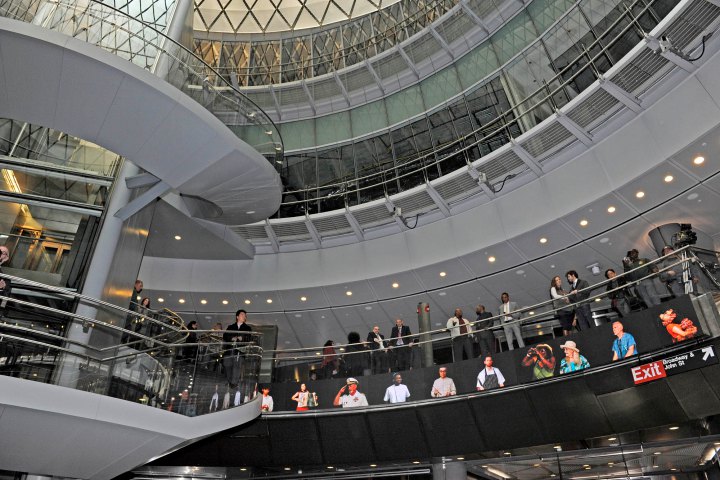By Rebecca Harshbarger New York Post

The new Fulton Center transit hub features an Oculus, designed to allow for natural light. photo: Gregory P. Mango
After years of delays and hundred [sic] of millions of dollars in cost overruns, downtown’s new gleaming transit hub, the Fulton Center train station, [sic] finally opens to the public Monday.
First envisioned as a way to rebuild lower Manhattan after 9/11, the MTA station was scheduled to open in 2007 and be the Financial District’s answer to Midtown’s Grand Central Terminal.
But epic funding and construction delays set in. The original $750 million price tag nearly doubled to $1.4 billion before the project was finished.
The initial contract for the project was unrealistic, according to the MTA, and was revised upward in 2009. The project has since stayed on budget, the agency said.
“The opening of the Fulton Center reinforces the challenges the MTA faces in bringing its ‘mega projects’ in on time and on budget,” said Gene Russianoff of the Straphangers Campaign, who also praised the station’s amenities.
MTA officials touted Fulton Center as a bold step into the 21st century that shows how the city has risen after the 9/11 terror attacks.
“This building stands as a testament to the resilience and strength of the city since that day,” MTA Chair Thomas Prendergast said.
He believes the station’s features — much of which were paid for with federal stimulus funds — will become as iconic as the lions outside the New York Public Library.
The new structure’s most eye-catching architectural element is an oculus, a 110-foot-high glass opening above a massive atrium that lets sunlight down to two levels below street level.
Builders had analyzed the sun’s path over the building to maximize the amount of light that enters the station.
“Magical would not be too strong a word,” said Michael Horodniceanu, president of MTA Capital Construction.
The facility has a glass and steel shell and 66,000 square feet of retail and office space for stores that will be leased by the Westfield Group, a retail developer.
It also has a 350-foot-long walkway under Dey Street between Broadway and Church Street.
The station will connect with the World Trade Center Transportation Hub when it opens next year.
Three MTA station agents will serve the hundreds of thousands of people who will go through the center, but Westfield will handle most of the hub’s upkeep.
Almost 350 security cameras will keep the new center safe, and the NYPD will protect the nonretail parts of the station.
Security company Allied Barton will provide around-the-clock security for the shop space.

